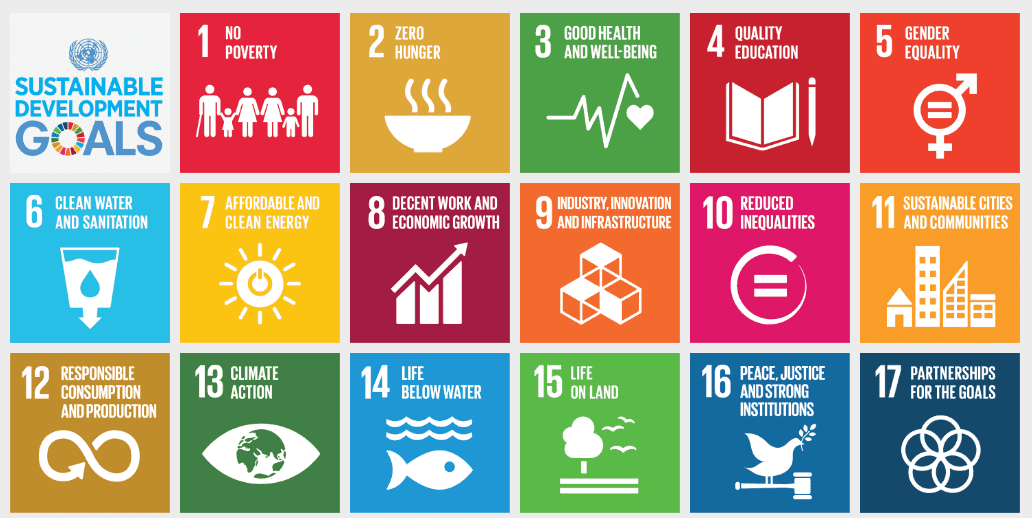I’ve discovered that this week 15-21 April 2018 has been designated World Creativity and Innovation Week. In 2017, the United Nations included World Creativity and Innovation Day, April 21 as a Day of Observance to encourage people to use creativity in problem-solving to approach solving the not inconsiderable 2030 Sustainable Development Goals (pictured above) – issues like gender equality, zero hunger and no poverty.
The week was chosen as the 15th April is Leonardo Da Vinci’s birthday. The organisers call it a ‘do-ocracy’, a DIY event. They invite you create ways to honour creativeness in your home, your school, your community, your business, with your customers – to make the world a better place and to make your place in the world better too.
So with this in mind I thought I’d share some of their ideas as to how to get your team or group to get involved. Here are 3 of their suggestions:
Set a weird challenge
Find the smallest or wildest problem your organization faces and challenge people to come up with ‘the worst’ solutions.
For example, a small problem could be that people leave their computers on at night and they need to be turned off to conserve energy. A zany problem could be snacks being stolen from the fridge.
Why it works
- By working together on the problem, contributors take more ownership even if the problem is small or zany
- By taking more time to define the real problem (the problem hidden within the problem), the solutions become more innovative
- By using seemingly silly or unsolvable problems it takes the pressure off to have a ‘proper’ idea
- Encourage people to showcase the ideas on their office doors or walls and no matter what idea is presented, ask everyone to build on the idea. See how “the worst” ideas spawn really great ones.
Learn from mistakes
An Emergency Task Force is a group that deals with serious incidents. The organisers behind WCIW say that groups like this undertake the following exercise after every situation.
The entire team enters a “no rank room”to debrief. There, no one has a title, rank, or seniority. Positive and negative concerns and ideas about what to do differently and/or better flow in this kind of dynamic. Once the debrief is over, the team exits the room and everyone resumes their rank.
A simple debriefing process to use is:
- What (what happened)
- So What (what did you learn)
- Now What (how can we apply the learning?)
Keep it simple and positive, this is not a place or time for blame storming. A way to avoid issues at the start of a project is to hold a pre-mortem – something I’ve written about here.
Another way to approach this is to have a ‘mistake party’
Reveal and even celebrate your mistakes with others and collect the learnings from them. Googleactually do this with their Quarterly Failure Reports.
Creative teams need to offer each other what’s termed ‘psychological safety’ – to know that ideas won’t be shot down, judged or even heavily criticised by people following personal agendas, even vendettas and working in silos. Much easier said than done.
You could share this blog and idea of WCIW with your team and get together to discuss how you might improve your creative output.
In my book I write more about how to develop creative teams – look out for the coaching questions in my next blog.

